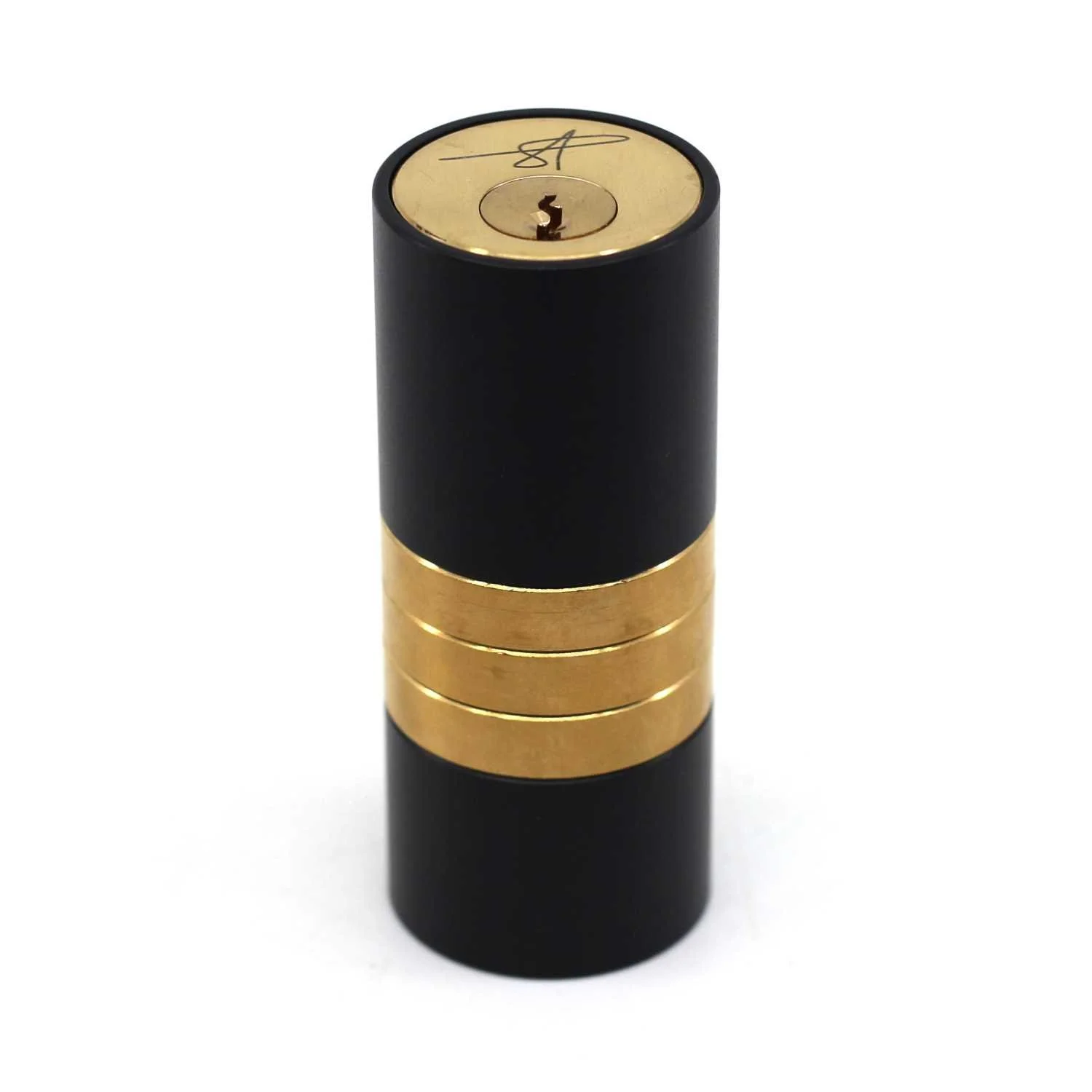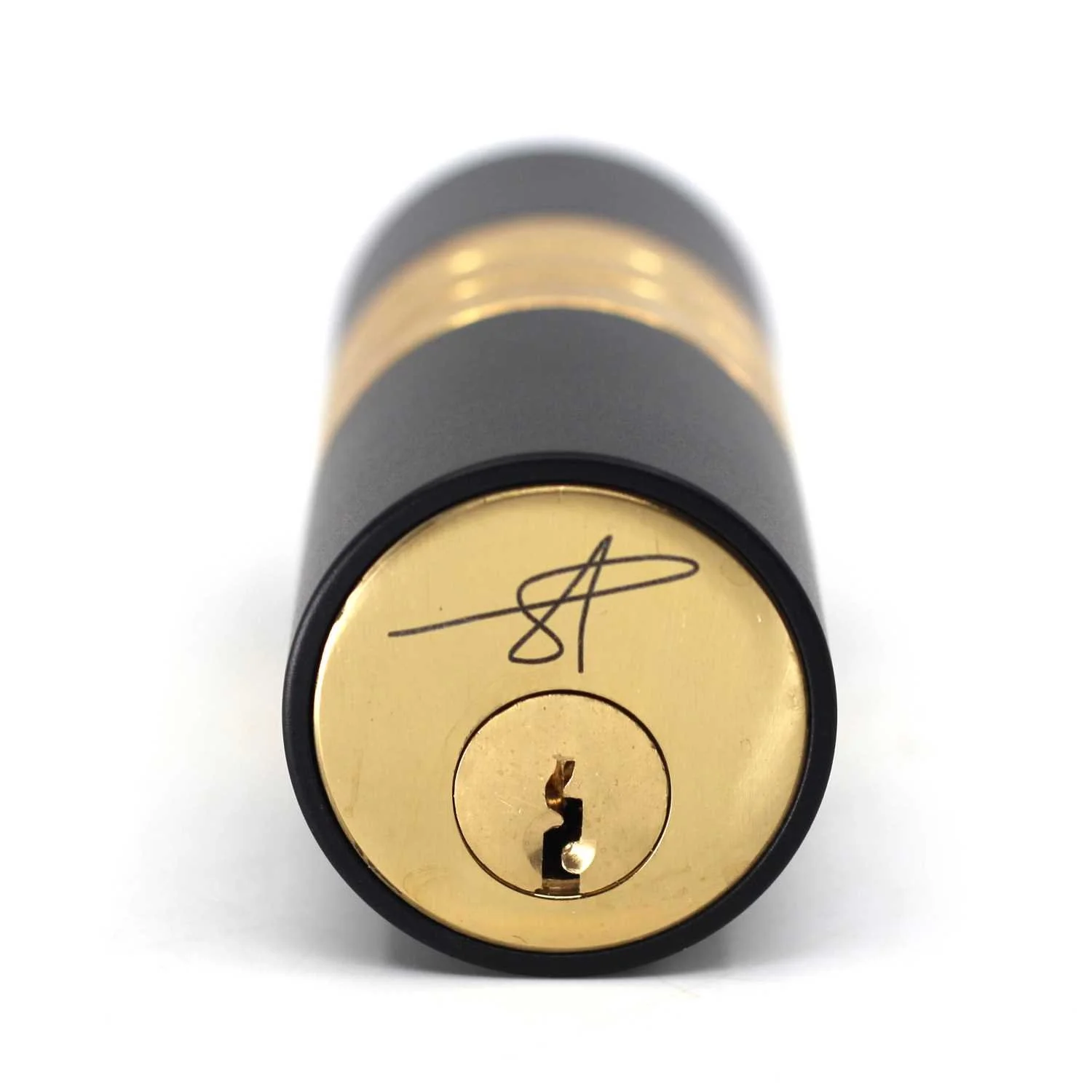Military Brass
Who Dares Wins
Who Dares Wins (HalesLock 6) by Shane Hales, Steve Nicholls and Ali Morris
Who Dares Wins is a British television show named after the SAS (Special Air Squadron) motto. The SAS is a British Army unit which deploys behind enemy lines for highly dangerous specialty raids, functioning similarly to the US Navy Seals. The show is a “quasi-military” reality show in which former members of British and US elite military squads put contestants through a shortened version of the training maneuvers required for the United Kingdom Special Forces selection process. Like the US Navy Seals training, in real-life the training has been known to claim lives. The show tries to keep this from happening. The verdict is still out regarding the puzzle …
Do you Dare?
It’s been a minute since we have had the pleasure of a new Shane Hales puzzle creation. Hales is a master locksmith in the UK (and a master carpenter, too) who also happens to be a brilliant puzzle designer. He has created a number of unusual designs in very limited numbers in years past, which have only been given as gifts. You can read about most of them on his website and on the Puzzlemad and Puzzling Times blogs. I had the good fortune to write about one of these as well a few years ago, and from the descriptions it should be clear just what kind of a trickster Mr. Hales can be. The best kind, naturally.
I Dare say!
More recently Shane has produced a series of puzzle locks, which are numbered in a very straightforward manner reminiscent of the great Rainer Popp’s own system. Just when it looked like the series might stop at number five, Shane has come up with a new design, and this time he had recruited a few friends to collaborate along the way. Shane shared the story of the new lock:
Dare devils?
“HalesLock 6 - meets Two Brass Monkeys. I have a number of projects on my bench for a number of years. It’s been disappointing not to have something released sooner, but it’s been a real struggle. As I no longer have people working with me and I’m on my own, this means, of course, I have to do everything myself work wise, so my spare time is not as abundant as it once was.
I visited a couple of engineers as this time I wanted to make a “custom” design, but unfortunately they are a nightmare, I made prototype and all sorts but it just didn’t go anywhere. That are just none interested in making 100 or even 200 - they want to makes thousands, plus they want everything in CAD, no prototype making, so if you get a part wrong it makes [you have to make all] new ones. In the end i got fed up with it.
original HalesLock 6 prototype in timber - courtesy of Shane Hales
Work has slowed here in the UK, so I had a little time on my hands, so I decided that I’d make a small run of an idea, this time a lock in a box! I brought in some parts and made up one version, and took it to MPP, I have found in the past that it’s a good idea to let a few of the puzzlers there who I trust to have a look and help weed out any flaws. I took along the make shift prototype, and sat Ali, Steve and Allard down to have a look over this basic idea, and to my surprise (as always) they really seemed to like it, and convinced me I should do the small run.”
first working 3D print of Who Dares Wins - courtesy of Shane Hales
Of course, it could have ended right there, with some positive feedback from a few people who know a thing or two about a good puzzle design. But Shane, Ali and Steve dared to dream bigger, to dream bolder, and to win! Just without all the grueling jungle warfare. “Then I had lunch with Ali & Steve, I went through the issues I had with trying to get stuff made, they knew anyhow as I have been moaning about for a fair amount of time. To my surprise they were interested in doing a joint venture and offered to help me. I have been close with both of them a very long time, we often chat in a group, I wouldn’t take up this offer with anyone, but we trust each other a lot! So we got to work, I worked on the lock and Steve and Ali got to work on the body housing or “box” part! I made up my parts, and they made up a 3D printed design, and it came out extremely well. We had full metal prototype parts made up, a few more tweaks for an improved solution and there we have it.”
How Dare you!
Very nice, well done, and who can resist a puzzle lock combined in a puzzle box, if you are at all interested in either of those sorts of things. I suspect maybe you are, if you are reading this far. But what about the name? Does this puzzle make you sweat and perhaps nearly die from heat stroke? “Well I wanted to make it a Haleslock 6, and of course it would not exist without the Two Brass Monkeys, and without doubt it wouldn’t be anywhere near the puzzle it is without them, and their experience with design and manufacturing has become spot on.” So the name Who Dares Wins was born from the collaboration, as it turns out. “It’s our message group: SAS. Steve / Ali / Shane. It’s a great nod to our many chats over the years, and I do wonder how many people will dare to win. It been a fantastic past year working with the boys, and I feel we have nice challenge for the puzzle community to take on, I’m really excited to hear everyone’s thoughts when they start coming in, fingers crossed they are good!” Indeed, the puzzle lock box has garnered overwhelmingly rave reviews. There is some psychology involved here, which you come to by and by after full exploration of the handsome object. I did mention Shane’s penchant for a devious trick, but I am not one to complain about such things, having applied my own brand of psychology to a puzzle I helped produce. The Monkeys helped ensure a laugh out loud ending which has you leaving the experience feeling quite pleased, and ready for a drink.
Army & Navy c. 1940
For those who dare to win, I salute you, with a classic cocktail toast that has its origins at the storied Army and Navy Club in Washington, DC. In keeping with the military theme here, the club was originally started in 1885 as a lounge and meeting place for war veterans, but is now open to all past and current members of the US Army, Navy and Marines. The daiquiri is said to have been first introduced here, by Admiral Johnson, in 1909, and there is a plaque on the wall of the “Daiquiri Lounge” commemorating the auspicious occasion.
basic training
The eponymous Army and Navy cocktail is also thought to have originated here, although the provenance is less certain. The drink first appears in the pages of The Fine Art of Mixing Drinks by David Embury, 1948. Embury was a lawyer with a passion for cocktails, and although not a professional, penned one of the seminal works of the era. I once featured his “Six Essential Cocktails” which hew to an older, boozier template than what is preferred by modern palates. Embury notes in his book that the original Army & Navy recipe used a 2:1:1 ratio (gin:lemon:orgeat), which he thought was “horrible”. He advises his own very dry formula of 8:2:1, a ratio which is found throughout the book. Modern day spirits writer Simon Difford adjusts things to an 8:3:2 ratio which may well, do I dare to say it, be the winner. Cheers!
Feeling daring?
Army & Navy adapted by Simon Difford
2 oz gin
¾ oz lemon
½ oz orgeat
2 dashes Angostura bitters
Shake ingredients with ice and strain into a coup glass. Lemon twist garnish.
double dare:










